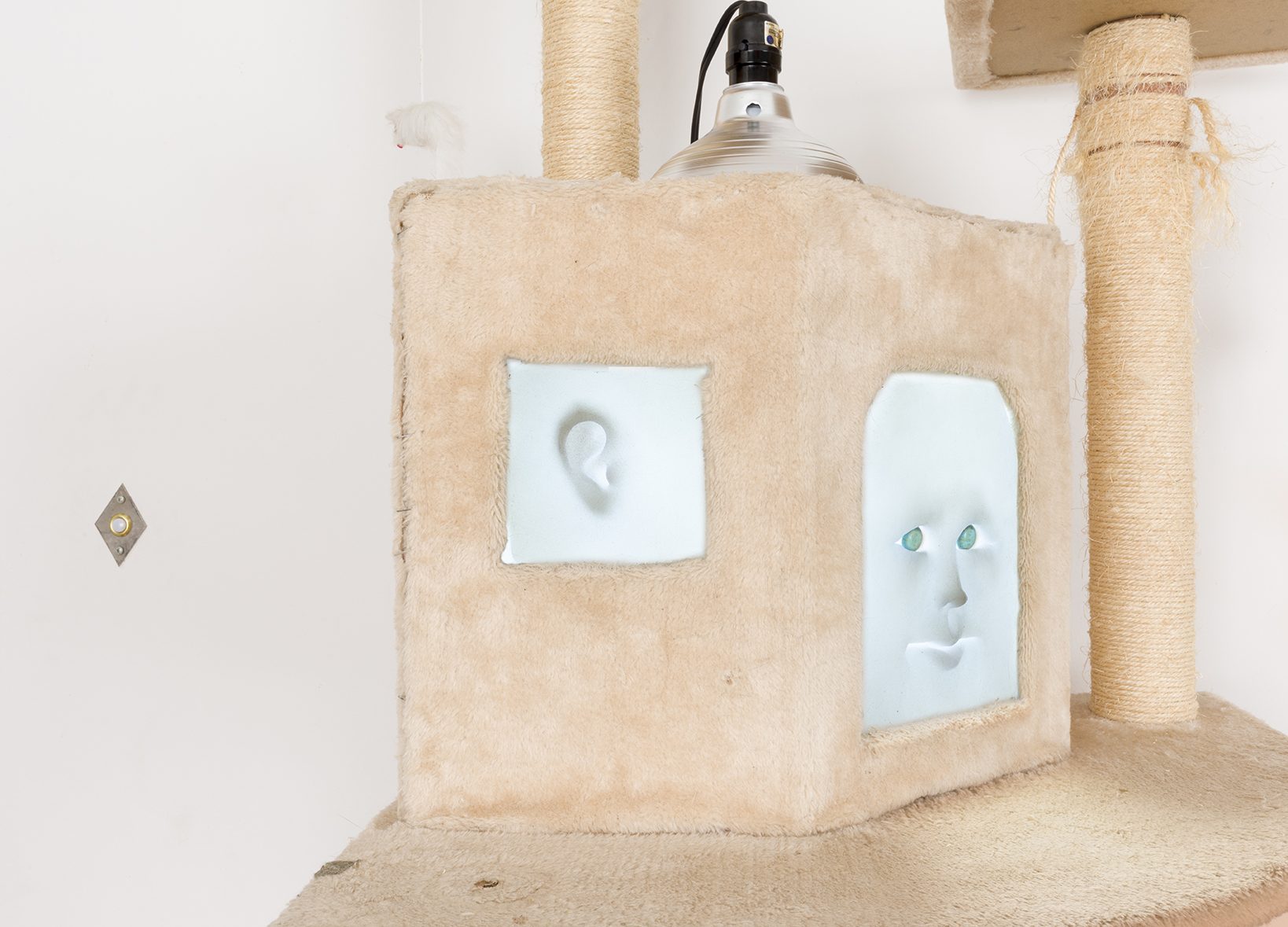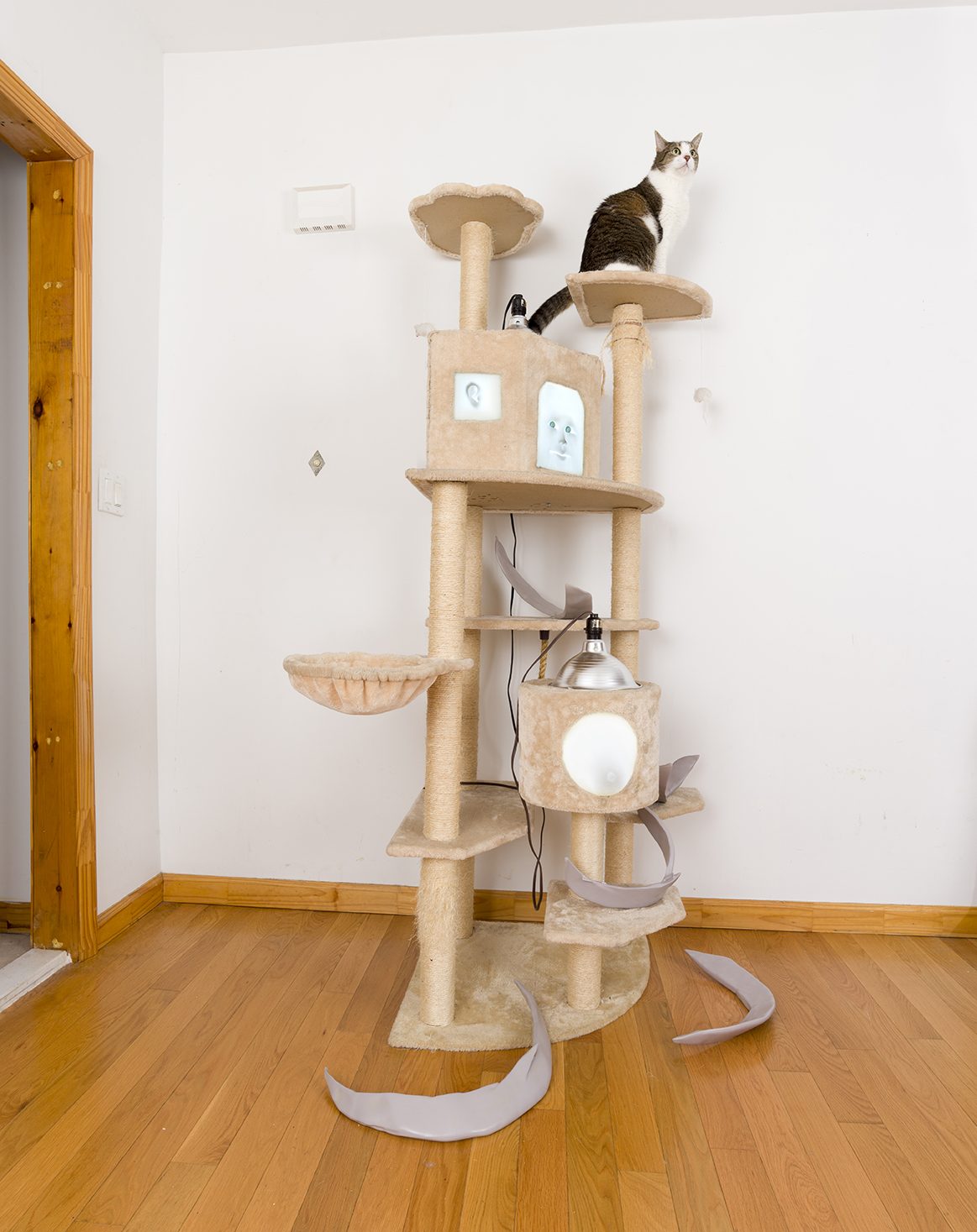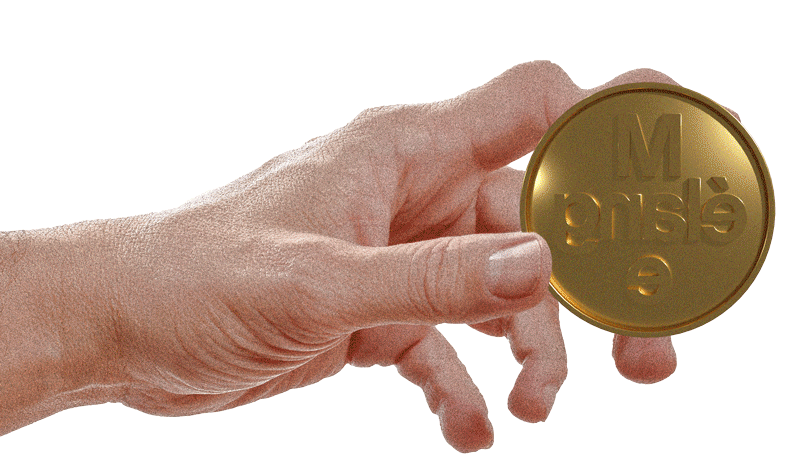31.10.2020 – 30.11.2020
on display at Catbox Contemporary, New York

please scroll down for German version
Exhibition Text by Hannah Rhein
passing over
Looking at the exhibition, Eyes Larger, Foreheads longer, Fingers Crossed by Aniara Omann and Nicolas Pelzer (currently up at Catbox Contemporary and curated by ≈5), one’s place remains undefined, since neither the exhibition space or the shown objects conform to a framework that fits behavioral or interpretational norm. What remains is the chance for bodily discovery, as one circles the entirety of the structure, constantly trying to solidify their own position against the presented work. The information presented lies somewhere between, referencing the body as byproduct and as soulful. Both The Unused Five and Great grandmother adorn and embellish the space while obstruct the interior space, hinting at an inner glow but making it impossible to determine what lies within. What evolves is a merger of individual parts to a wholesome unity. Catbox Contemporary becomes a place that simultaneously points in opposite directions, directing us to think about the preciousness of our interior thoughts while also thinking of our body as something to be discarded. The Unused Five glorifies the seemingly insignificant nail trimming, monumentalizing this now distanced byproduct through Pelzer’s process of process of 3-D scanning and 3-D printing. On the other end of the spectrum, the cyborg-ish silicone face, ear, and pregnant stomach of Omann’s, “Great Grandmother”, are constructed delicately. They emit an eerily soft inner glow, breathing life into the body of the otherwise lifeless Catbox. Both artist’s point to different aspects of what it is to be human; Omann by focusing on the contemplative substance of an internal life, and Pelzer by focusing on parts of us we never think about and readily throw away. By moving in these directions they never have the chance to fully be reunited- they remain forever in the in-between.
Not me. Not that. But not nothing, either.
A “something” that I do not recognize as a thing.
Julia Kristeva*
In Kristevas approximation, this lack of ability to define and recognize is attributed to the subconscious – something inside us, that we cannot access actively but provokes dreams, fear, and even disgust when confronted with the undefined. Even if the status of art allow here to perceive objects as works of art, the Perception remains bound to the reference to one’s own. Both Fingernails and Silicone Masks create a relationship to the Human, which does not ultimately reveal itself. The surreal might be a substitutional category trying to describe, where we find ourselves.
* Powers of Horror. An Essay on Abjection, New York 1982, S. 2.
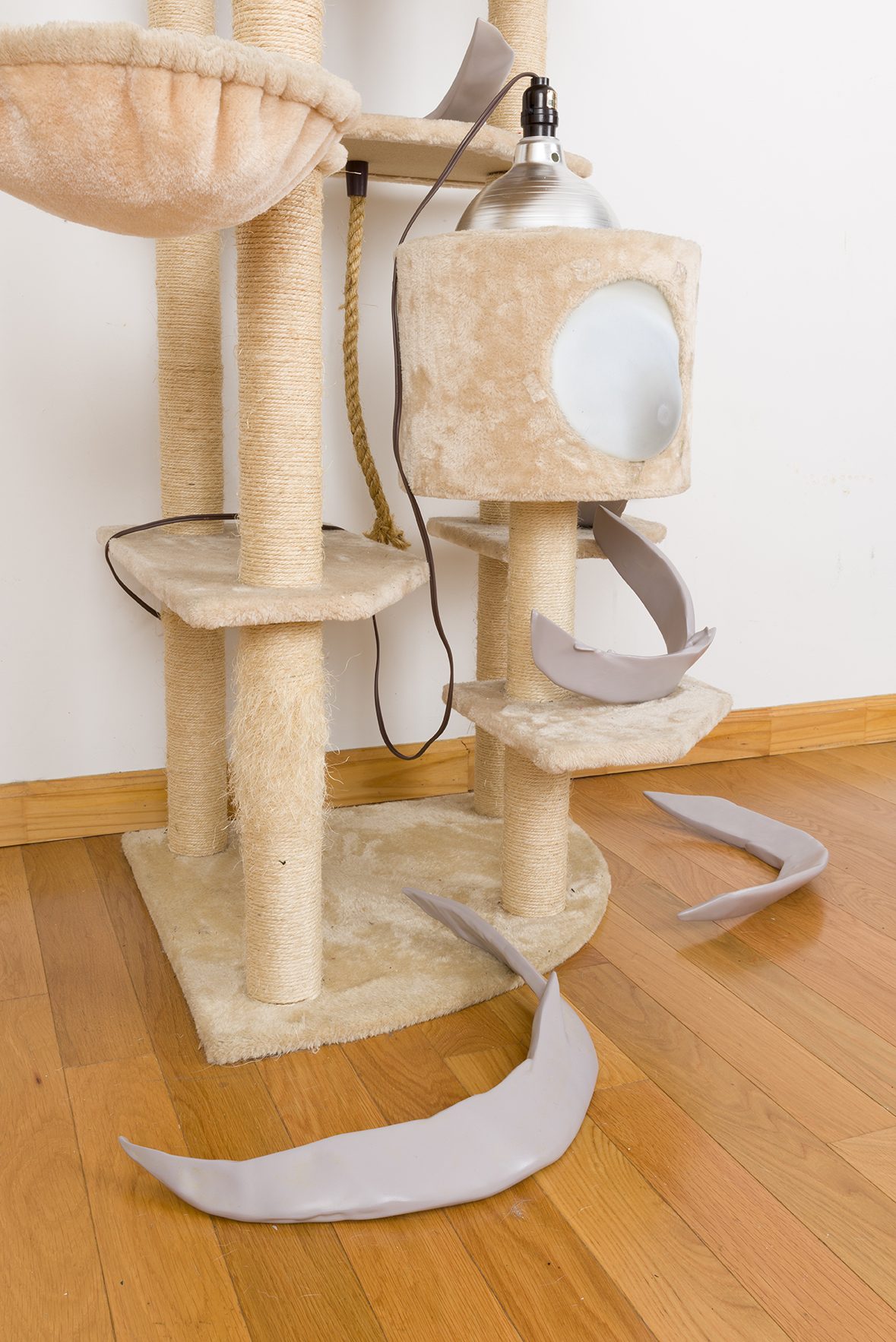
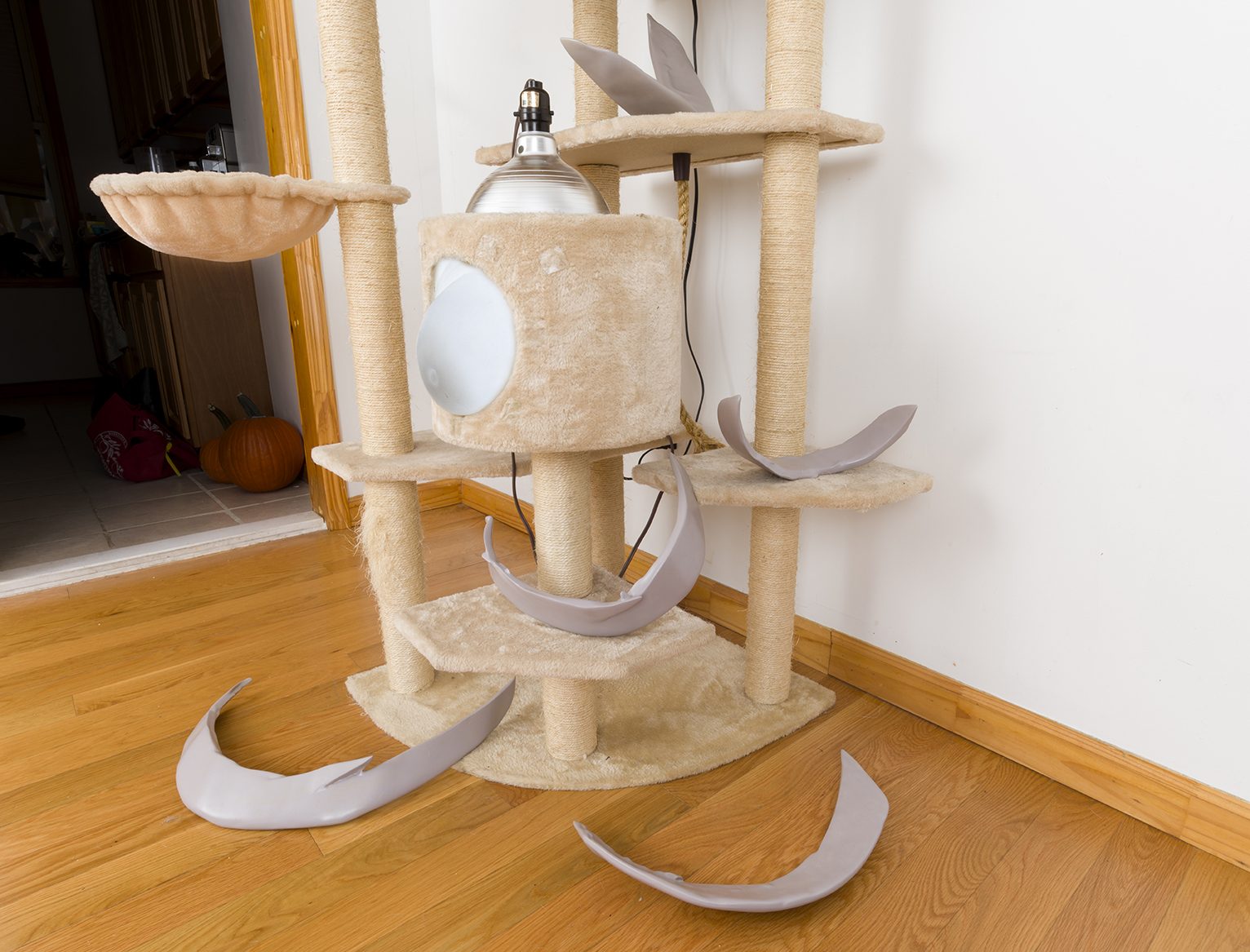

hinübergehen
In der Betrachtung der Gruppenausstellung der CATBOX CONTEMPORARY mit Aniara Omann und Nicolas Pelzer in Kooperation mit dem ≈5 ist die eigene Verortung undefiniert, da weder der Ausstellungsraum noch die Ausstellungsobjekte eine bestimmte Verhaltens- und Deutungsnorm vorgeben. Übrig bleibt eine suchende Bewegung, ob mit den Augen oder dem Körper, um das Gesamte herum, mithilfe derer ein Versuch unternommen wird, die eigene Position im Verhältnis zum Sichtbaren zu definieren. Doch weder eine definite Rolle meiner selbst noch des Gegenübergestellten wird hierbei möglich. Gerade weil Fingernägel und Silikonmasken den Ausstellungsraum verschließen und umgeben, sodass ein Eindringen ins Innere unmöglich ist. Vielmehr kommt es zu einer Verschmelzung der Einzelteile zu einem Gesamten: Die CATBOX CONTEMPORARY wird zu einem Ort zweier jedoch eigentlich gegenläufiger Verschiebungen: Fingernägel auf der einen Seite, die einen eigentümlichen Status als etwas vom Körper Abgeworfenes einnehmen, werden in Nicolas Pelzers Arbeit The Unused Five noch weiter vom menschlichen Subjekt entfernt, indem sie über den Prozess des 3D-Scans und des 3D-Druckens wieder materiell als Objekt nachkonstruiert werden. Das cyborg-artige Gesicht, das Ohr und der schwangere Bauch von Aniara Omann’s “Great-Grandmother” werden auf der anderen Seite von der Künstlerin so konstruiert, um einem leblosen Objekt wie dem Kratzbaum Menschlichkeit zu verleihen. Beide Positionen laufen aufeinander zu, können aber nicht gänzlich ineinander aufgehen, da sie sich einerseits vom Subjekt und andererseits vom Objekt entfernen, aber nie gänzlich das eine oder das andere werden können – sie verhaften nebeneinander im Dazwischenliegenden:
Not me. Not that. But not nothing, either.
A “something” that I do not recognize as a thing.
Julia Kristeva*
In Kristevas Annäherung ans Abject wird diese Benennungs- und Erkenntnisnot dem Unbewussten zugeschrieben – ein Inneres, das uns nicht aktiv zugänglich ist, aber bei Konfrontation mit einem nicht klar definierten Etwas, Träume, Ängste und Ekel provoziert. Auch wenn der Status der Kunst hier erlaubt, Dinge als Kunstwerke wahrzunehmen, hängt die Betrachtung von einer Bezugnahme auf das eigene ab. Die Fingernägel und die Silikonmasken stellen eine Beziehung zum Menschen her, die aber nicht gänzlich aufgeht. Das Surreale könnte eine Behelfskategorie sein, die versucht zu beschreiben, wo wir uns verorten.
* Powers of Horror. An Essay on Abjection, New York 1982, S. 2.
